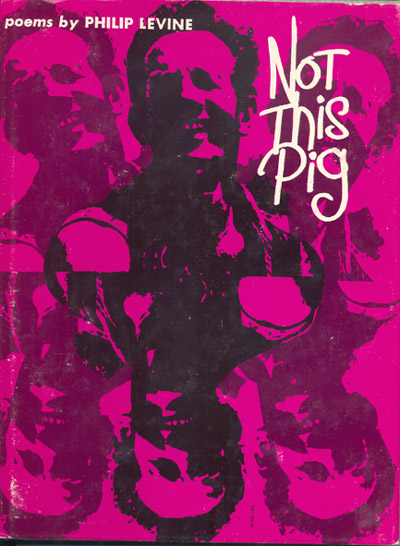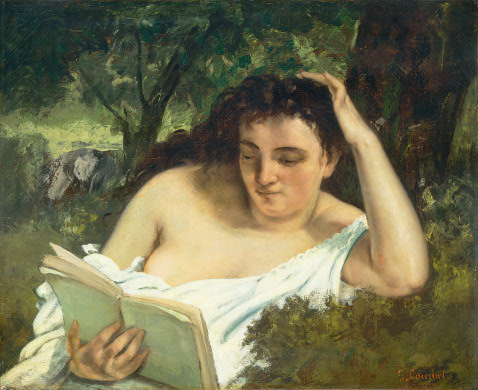For several Sunday mornings now, I have walked down to the Little Miami River following a path in the woods that takes me past some mossy stones that once made up foundations for several small cabins. Runaway slaves found refuge there on their journey north to Canada in the 1850s. The spot isn’t far from the Mill where I used to live, which was a stop on the Underground Railroad. The woods are so thickly overgrown now with honeysuckle that I have to search for the stones. In the quiet of the morning I’ve heard a wood thrush singing, even this late in August. I pause then and hum a little of Duke’s gospel masterpiece, “Come Sunday.” And I think of Emerson’s simplest statement of faith, “I believe in the still small voice.”
This clip of Come Sunday comes from Ellington’s First Sacred Concert in 1965. The singer is Esther Marrow. Mahalia Jackson recorded another live version with Ellington in 1958, on the eve of her own legendary performance at the Newport Jazz Festival.
![Moncure_Daniel_Conway Moncure Daniel Conway [Source: Wikipedia] http://en.wikipedia.org/wiki/File:Moncure_Daniel_Conway.jpg](../../../../wp-content/uploads/2010/08/Moncure_Daniel_Conway.jpg) Update 082910: Into this arc of connections from Emerson to Ellington comes Moncure Conway (left) , abolitionist preacher and biographer of Tom Paine, who died in Paris in 1907. Thanks to Sue Parker for introducing him in the comments. “The Grinnell’s old barn also still exists close by (although in much altered form!) where the formerly enslaved group resided, according to Moncure Conway’s autobiography… Underground Railroad lore is often only that, but in this case I feel confident because of these two sources. Sadly, the only other account I have found about Grinnell Road was in the Siebert papers at Ohio Historical Society. There I found an account of a running young woman captured (by slave hunters) on horseback on Grinnell Road.”
Update 082910: Into this arc of connections from Emerson to Ellington comes Moncure Conway (left) , abolitionist preacher and biographer of Tom Paine, who died in Paris in 1907. Thanks to Sue Parker for introducing him in the comments. “The Grinnell’s old barn also still exists close by (although in much altered form!) where the formerly enslaved group resided, according to Moncure Conway’s autobiography… Underground Railroad lore is often only that, but in this case I feel confident because of these two sources. Sadly, the only other account I have found about Grinnell Road was in the Siebert papers at Ohio Historical Society. There I found an account of a running young woman captured (by slave hunters) on horseback on Grinnell Road.”
And I think of Emerson’s profound statement of faith, “I believe in the still small voice.”
![gustave_caillebotte_paris_street_rainy_day Gustave Caillebotte. Paris Street, Rainy Day (La Place de l’Europe, temps de pluie). 1877. Oil on canvas. Art Institute of Chicago. [Source: Wikimedia Commons]](../../../../wp-content/uploads/2009/02/gustave_caillebotte_paris_street_rainy_day_1877_wiki.jpg)
![Fog at Isle Royale [Source: wildmengoneborneo.com] Fog at Isle Royale [Source: wildmengoneborneo.com]](../../../../wp-content/uploads/2008/04/isle_royale_fog.jpg)
 If there is an emerging genetic underclass, I could run for class president or class clown. Read more in
If there is an emerging genetic underclass, I could run for class president or class clown. Read more in 

Your comments about Grinnell Road hit a chord! Knowing what happened on the land makes visiting there different from what it would otherwise be, doesn’t it?
The Grinnell’s old barn also still exists close by (although in much altered form!) where the formerly enslaved group resided, according to Moncure Conway’s autobiography. The barn is confirmed in its age by Donald Hutslar, log cabin expert, who visited descendants of the original Grinnells there with his father. When I asked him if it was old enough to have been the one where the “Conway slaves” resided, he looked at the ceiling and said, “That could be late 1700’s!”
Underground Railroad lore is often only that, but in this case I feel confident because of these two sources. Sadly, the only other account I have found about Grinnell Road was in the Siebert papers at Ohio Historical Society. There I found an account of a running young woman captured (by slave hunters) on horseback on Grinnell Road.
Thanks so much for the historical references, Sue. Much of what I remember from my days of living at the Grinnell House and in the Grinnell Mill is known from oral tradition. It’s long been my hope to verify and document what I can.
When I read your reference to Moncure Conway, I thought I recognized the name – the first biographer of Tom Paine. I had no idea that Conway had connections with the Grinnell’s and Yellow Springs. What is the title of the autobiography that you mention?
Very fitting for the scope of a blind flaneur is a Conway tangent from Yellow Springs to Paris. According to Wikipedia, “He moved to France to devote much of the rest of his life to the peace movement and writing. Conway died alone in his Paris apartment on November 15, 1907.”
Another Wikipedia passage notes Conway’s early connection with Emerson:
Mark, you may really enjoy the autobiography of Moncure Conway. You can find a two volume set in either the Antioch Library or Antiochiana. I believe it is circulating, but you can ask Scott Sanders whether it is or not. If you cannot get it let me know. ( “Autobiography, Memories and Experiences of Moncure Daniel Conway in two volumes”, 1904 )
There are also (and always?) other interesting connections. The book, “Harriet
Jacobs, a life; the remarkable adventures of the woman who wrote Incidents in the life of a slave girl”, by Jean Fagan Yellin, places a connection between the Grinnells and Harriet Jacobs. There is a tiny Grinnell cemetery next to the old brick house on Grinnell Circle and some of the names are similar to the New England family who bought the freedom of Harriet Jacobs (Cornelia Grinnell Willis). Along the bike path south of Grinnell Road is a historical marker put up to honor Moncure Conway and the people who came here with him. It was put up in about 2003 I believe, then disappeared mysteriously, and is now there again!